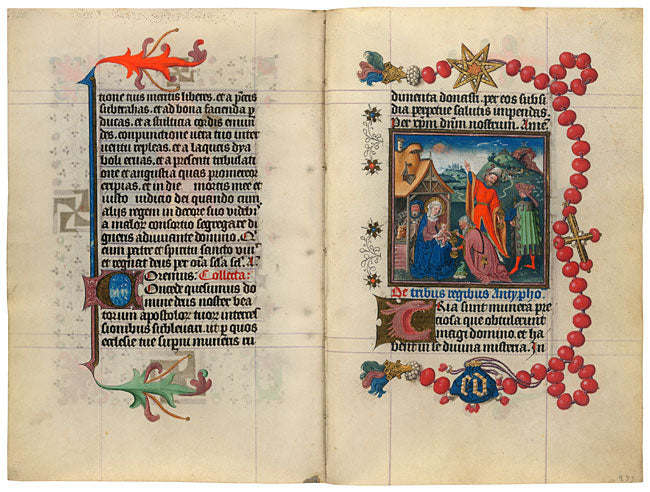
The Rosary in Medieval Times: A Journey Through History
The rosary, a cherished symbol of faith and devotion, has a rich and complex history that dates back to medieval times. As a cornerstone of Catholic prayer life, the rosary has evolved in form, significance, and use throughout the centuries. This journey through time reveals fascinating insights into how the rosary was perceived and utilized during the medieval period, shedding light on its role as both a spiritual tool and a cultural artifact.
The Rosary as a Status Symbol
In medieval times, the rosary was not just a religious object; it was also a marker of social status. The materials used to craft a rosary and its intricate designs often reflected the wealth and prestige of its owner. Rosaries made of precious materials such as gold, silver, and gemstones were common among the nobility and the wealthy. These luxurious items stood in stark contrast to the simpler rosaries made from wood, bone, or seeds, which were used by the common folk.
While the notion of a rosary as a status symbol may seem contradictory to its purpose as a humble tool of prayer and meditation, this dual role highlights the complex interplay between faith and societal norms in medieval times. The presence of opulent rosaries underscores how deeply intertwined religious practice and social hierarchy were during this period.
Household Rosaries: Quantity and Craftsmanship
In medieval households, it was not uncommon for multiple rosaries to be present. Wealthier families might possess several rosaries, each varying in materials and design, to be used on different occasions or by different family members. Rosaries were crafted to last, often becoming cherished heirlooms passed down through generations. The durability of a rosary depended largely on its materials; those made from sturdier substances like metal or stone could endure for centuries, while those made from organic materials like wood or seeds might deteriorate more quickly.
Receiving a Rosary: A Rite of Passage
Receiving a rosary was often a significant event in a person's life. In medieval times, rosaries were commonly given as gifts during important milestones such as baptisms, first communions, confirmations, and weddings. These occasions marked not only personal spiritual growth but also one's formal entry into the wider Christian community. A rosary given at such a time was more than a mere object; it was a symbol of faith, a token of love, and a link to the divine.
Historical Facts and Interesting Tidbits
- Evolution of the Rosary: The structure of the rosary as we know it today was standardized by the 15th century. However, its origins can be traced back to earlier prayer beads used by monks to count psalms and prayers.
- Material Diversity: While rosaries of gold and other metals were prevalent among the wealthy, many rosaries were made from simpler materials such as wood, bone, glass, semi-precious stone, and even pressed rose petals, which imbued the beads with a subtle fragrance.
- Symbolism in Design: The crucifix or medallion attached to a more expensive rosary could feature intricate engravings, or simply be solid, serving as a visual aid for meditation and reflection. Other attachments included tassels or religious medals. A lack of adornments reflected that a rosary belonged to someone who could not afford further addition or personalization.
- Cultural Significance: In addition to their religious importance, rosaries were often buried with their owners.
The Convoluted Nature of Status and Devotion
The idea of a rosary as a status symbol presents a paradox. On one hand, the rosary is a sacred tool meant to facilitate prayer, humility, and a closer connection to God. On the other hand, it was used in this time as a symbol of wealth and social standing introduces an element of pride and vanity, seemingly at odds with its spiritual purpose. This tension reflects broader medieval societal norms where piety and prestige often intersected in complex ways.
Conclusion
The history of the rosary in medieval times is a testament to its enduring significance in the lives of the faithful. As both a symbol of devotion and a marker of status, the rosary has navigated the delicate balance between spirituality and societal influence. Understanding this history enriches our appreciation of the rosary as more than just a string of beads, but as a profound emblem of faith, culture, and human experience.
At Armor Aflame, we remember this complex heritage by crafting rosaries that are not only beautiful and enduring but also deeply rooted in the tradition and spirit of the Catholic faith, while staying true to its true purpose: to be prayed. As you hold your rosary, remember the centuries of devotion and history it represents, and let it guide you in your spiritual journey.
---
Join the Conversation
What aspects of the rosary’s history do you find most intriguing? Share your thoughts and experiences with us in the comments below, and stay tuned for more insights into the fascinating world of Catholic tradition and devotion.